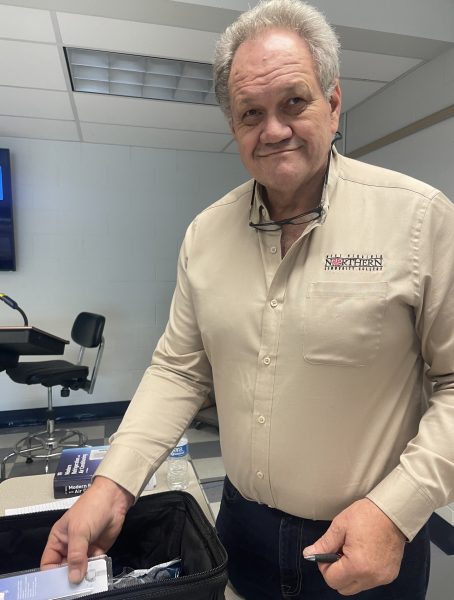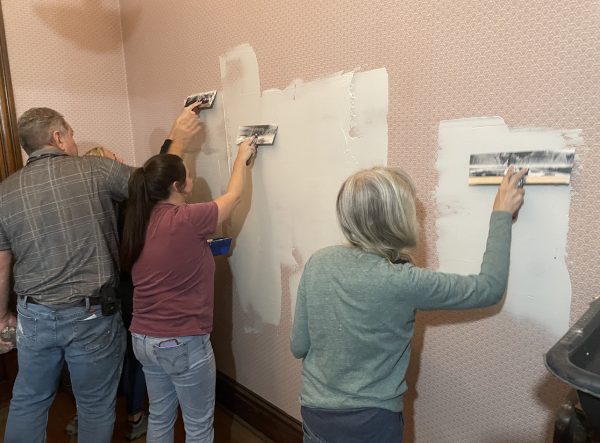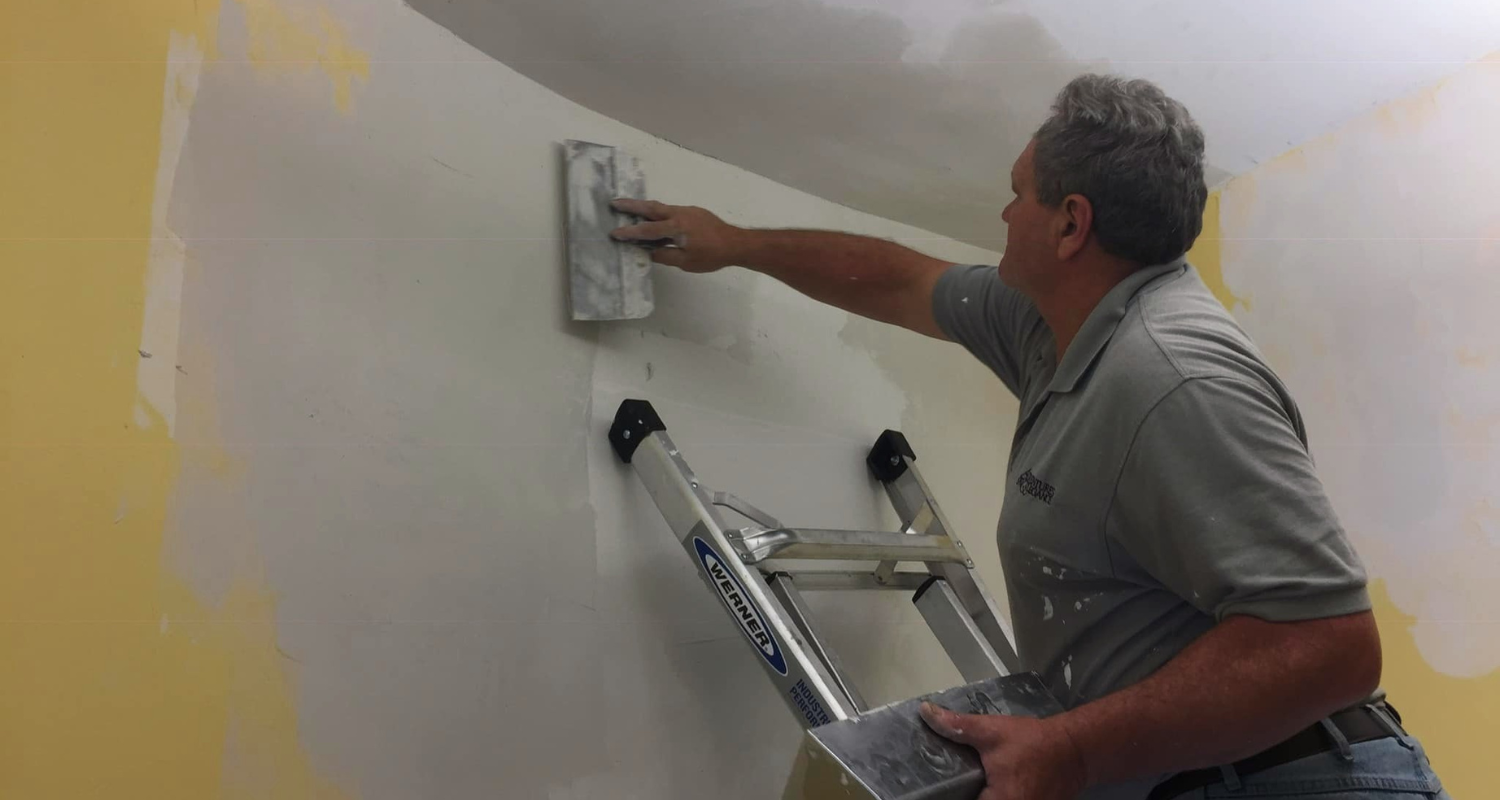Maybe you don’t know Sarel, but if you’ve been to the Capitol Theatre, the First State Capitol Building, the Scottish Rite, or any number of historic places in Wheeling (or in Minnesota, Alabama, Hawaii, the Caribbean, or South Africa), you most certainly know his work.
Sarel is a genuinely kind person with a killer South African accent; he’s extremely intelligent and resourceful, but his most endearing and admirable quality is that he cares. He cares about preserving and restoring the beauty of the past so deeply and so passionately that he has dedicated his life’s work to it. Today, he is shifting his focus from saving the buildings with his own two hands, to teaching younger generations how to do so.
When I ask Sarel why he’s so passionate about restoration, he replies, “If you are lucky enough to find something in life that you can contribute to, that makes a difference, and is worthwhile, then you’ll be passionate about it. This is something that’s needed, that everyone should know and that I can add to. It’s a no-brainer.”
The Man and The Mission
Born and raised in South Africa, 8 years working in the Caribbean led Sarel to… Grafton, West Virginia? Why?
Sarel tilts his head, “Why do men do anything?”
“It’s always [because of] a woman,” his partner, and fellow superstar in the art of restoration and preservation, Bekah Karelis, chimes in.

Sarel nods and continues, “I was married at the time to a young woman who had family in Buckhannon, WV, [and] I was running the new installation division for a hurricane shutters manufacturer… Hurricane Andrew was coming, we had shifts installing at all hours of the day and night, it was a chaotic situation. Then in the winter we visited Buckhannon, and I fell in love with the peace of West Virginia. And I knew I was going to stay here.”
Ironically, the peace he experienced that winter in West Virginia wouldn’t last long. Although it is initially a slow start, Sarel eventually builds up a name and business for himself. Then at an expo in Charleston, things shifted.
“When I first got here in the early 90s, I was doing decorative drywall. One year I went to the Charleston home show to display my work,” he recounts. “I built a 10×10 room with a ceiling the night before the show started. I did layers of decoration on the ceiling, painted it, I had an audience of security people watching as I worked.”
Yes. Sarel went to an expo and built an entire room, with decorate drywall details, the night before. After that, it was off to the races, but not in the way you’d expect.
“There was no one big break; it was all little increments. After 2000 all my work was on the road. I was traveling all over the place. I did work on the Minnesota state capitol, a couple of jobs in Arkansas, two jobs in Hawaii that lasted 18 months… Being away for so long was a major drawback; you miss a lot of opportunities,” Sarel says.
This is what lead to the decision to make the move from Grafton, WV to Wheeling. “I didn’t want to travel so much. Working in Wheeling allowed me to work here, and not have to travel, because Wheeling has so much work to do.”
And boy is there. Sarel is an incredibly logical, methodical man who holds quality work and efficiency in the highest regard. Before he does anything, he applies a three-step process: identify the problem, figure out a solution, and find the resources necessary to achieve the solution.
This process is responsible for the career change he made in the 90s, from drywall to plaster.
The problem he identified was that plaster projects in old buildings were constantly being: abandoned due to the budget getting out of control, structurally inferior because incorrect methodologies were applied to ‘fixing’ them, and there was waste. So much wasted materials.
After establishing the problem, the solution was quite clear: just restore the plaster instead of tearing it out. He had the knowledge of the source material; South Africa was a plaster-heavy country, he had worked with the material many, many times. He also had access to all the resources he needed. He just had to put them together and apply them to the problem.
Forget the Fish: Teach Them to Plaster
Anyone who knows Wheeling knows that the architecture that defines our town is visually striking; they also know these venerable buildings have been subject to abuse and neglect and are quite literally falling apart. Luckily, there are people who fall in love with them anyways; they buy them, determined to change their fate. Unfortunately, doing this is a hell of a lot harder than anyone can really imagine.
“Contractors and engineers, they want to do everything as efficiently as possible, but they don’t take the context of their efficiency into account,” he says. “They want to make an old building efficient, but they want to use new ways of doing it. They don’t realize they need to treat an old building like an old building.”
What does this mean? It means that small problems can into big problems depending on a contractor or building owner’s level of familiarity with historic building rehabilitation. Here’s your answer in a bullet-pointed nutshell:
- The contractor or owner walks into the building, sees missing or loose plaster, or they need to update plumbing or electric, and decide to take it down and replace it with drywall
- For loose/missing plaster: they must remove the molding, trim, plaster, door frames, etc. For electric or plumbing, they cut out enormous sections of the wall.
- After the room is gutted, they hang drywall.
- After the drywall is hung, they realize that the molding, trim, door frames, window frames, etc. no longer fit properly
Your budget gets effectively blown to smithereens and you either empty your bank account or abandon the project completely.
This process drives Sarel nuts, which is why he strongly advocates for plaster restoration as an alternative. Sarel explains the process:
- The contractor or owner walks into the building, sees missing or loose plaster, or they need to update plumbing or electric, and decide to call Sarel.
- For plumbing or electric, Sarel will identify small portions of the wall to drill into for wiring/piping, eliminating large unnecessary holes. Then he’ll do step 3. For cracks, holes or loose sections, he will also do step 3.
- Inlay the area with mesh; using mesh will allow the walls the flexibility they need to ‘settle’ as the building itself settles and ensure the integrity of the wall.
- Plaster over the mesh.
- Save an insane amount of money, time, and effort. Stay on budget.
Why doesn’t everyone just do this? Well, there isn’t an abundance of plaster workers in the area. That’s why Sarel embarked on his latest mission to educate homeowners on how to take on their own plaster restoration projects.

Sarel designed this curriculum specifically for homeowners who bought an old house in need of repairs. These courses offer not only the breadth of knowledge Sarel carries around with him, but hands-on experience in Wheeling’s beautiful old buildings. Information on classes and other goings-on can be found on his company’s Facebook page, Adventures in Elegance.
This is not the first class of its kind – he’s been doing this for 20+ years – and it won’t certainly be the last. Sarel and Bekah have big plans for the future.
What’s Next for Adventures in Elegance?
These days Sarel prefers teaching and consulting; he and Bekah plan to offer their expertise in the realm of consultation to developers who have purchased these old buildings. Passing on their knowledge and skill set to others is something they are passionate about, which is why they are taking drywallers, homeowners, and other professionals under their wings – and maybe starting a YouTube channel so people from across the country can save the beautiful buildings in their towns.
While on this crusade to preserve and restore the beauty of the past through preserving and restoring plaster, simultaneously dispersing his methods so that the younger generation can carry on his quest, Sarel has identified another problem. And it’s a real four-letter word.
“HVAC.”
Sarel explains how modern air conditioning systems can be a difficult feat in old buildings. He and Bekah are currently attending a course on geothermal systems and are planning for ways to make cooling historic buildings more efficient.
Stay tuned to see where this journey takes them!
• Haley Steed has lived in Wheeling for the past 9 years. Before moving to Wheeling, she lived in Columbus, OH where she graduated with a BA in Comparative Cultural Studies from Ohio State University. Haley also earned an MS in Marketing and Communications from Franklin University. She has held multiple marketing positions for 10+ years, with experience in PR/media relations, internal communications, marketing campaign strategy + execution, SEO, branding, content creation, digital analytics, and graphic design. Haley currently serves as an AmeriCorp member at Wheeling Heritage. Haley has one human named Vida, two cats named Hank and Squigs McAllister, and is currently manifesting that her one-day husband’s name will be Jeffrey Goldblum.





